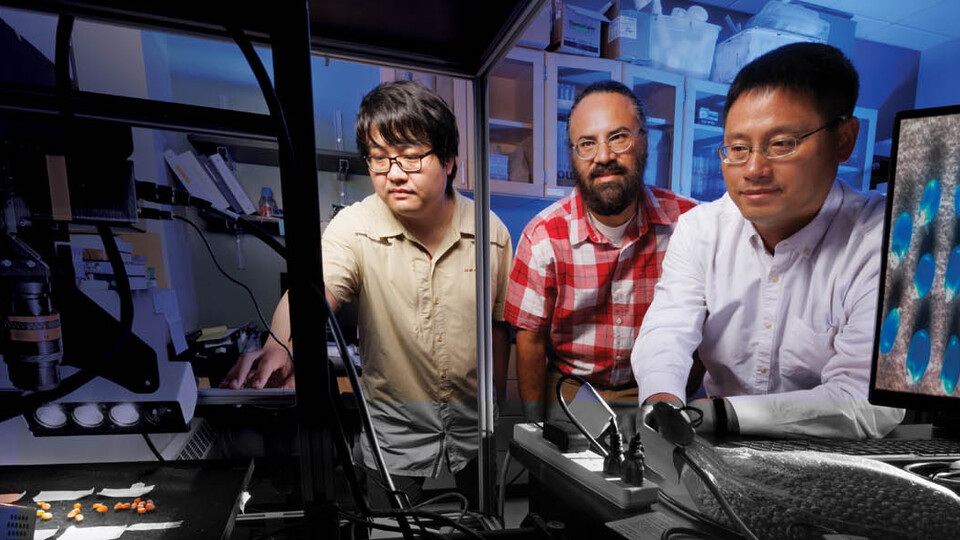Lincoln, Nebraska, USA
January 3, 2023

From left: Graduate student Tian Gao, Harkamal Walia and Hongfeng Yu
Improving agriculture in a world that’s heating up and drying out isn’t solely about increasing yields. Nutritional quality is also crucial.
While measuring yield is as easy as weighing grain, what’s inside seeds is harder to discern.
To help improve the nutritional value of crops undergoing heat stress, Nebraska agronomist Harkamal Walia teamed with computer scientist Hongfeng Yu and his team.
Together, they developed HyperSeed, an imaging system that uses light wavelengths to rapidly create a nutritional fingerprint of each seed.
“We had a bunch of seed for which we had measured yield, but it wasn’t feasible to ascertain the quality of those grains,” said Walia, Heuermann Chair of Agronomy. “The cool thing was they came up with an engineering solution.”
The hyperspectral camera beams infrared electromagnetic waves onto seeds to measure reflection and absorption patterns. The results identify an individual seed’s nutritional characteristics such as moisture content, nitrogen levels and starch content.
Normally, testing multiple varieties would require months of growing large numbers of plants to assay seeds that are destroyed in the process. With just a handful of seeds, HyperSeed cuts the procedure down to seconds. Intact seeds can then be planted or further investigated.
Scientists can link variations in seed traits found by HyperSeed with changes in gene sequences. The technique can also be used to study the effect specific genes have on grain quality in gene-edited crop lines.
Yu, associate professor in the School of Computing and director of Nebraska’s Holland Computing Center, and his team developed open-source software using affordable hardware, allowing others to customize the system for their research.
HyperSeed’s approach is similar to the hyperspectral camera at the Greenhouse Innovation Center on Nebraska Innovation Campus that measures plant traits. HyperSeed, however, is able to focus at the level of seeds and other tiny objects with high resolution.
“Hopefully, this will help make agriculture and food more resilient to a changing climate and increasing populations,” Walia said.
The team detailed its system in the journal Sensors. The National Science Foundation funds this research.
Stories on this research and more was featured in the 2021-2022 University of Nebraska–Lincoln Research Report, now available online.